As a lifelong trout angler, I’ve always found it fascinating how the same stretch of water will fish completely differently at certain times of the day. It shouldn’t be surprising, considering how environmental factors like light and temperature change the behavior of trout as the day goes on, but I’m often blown away at how any given run might seem completely devoid of fish in the morning, and then loaded with aggressive trout as the sun dips behind the mountains.
Of course, that’s the lesson, right? Light and temperature. They play oversized roles in how trout move throughout their environments and how they approach food and the effort to find it.
Empty at noon, full at dusk
A few years back, while fly fishing in Patagonia, I was reminded of the relationship between water temperature and light, and how both conspire to essentially plan a trout’s day for them.
Fly fishing the rivers around San Martin de los Andes in Argentina is never a dull task — famous waters like the Chimehuin and the Collon Cura absolutely burst with trophy trout. But the equally famous Rio Malleo, more than any of the classic Argentine trout waters, is a river with multiple personalities. In its upper reaches, it’s a creek-freak’s paradise as it flows out of Lago Tromen along the border with Chile. There, shrouded by beautiful araucaria trees, the freestone stream offers some incredible sight-casting to very respectable browns and rainbows in the boundaries of Lanin National Park.
Further downstream, as it leaves the mountains, the Malleo flow across lush pasture land — bright green meadows where cattle grow fat and happy. Still farther downstream, the river dives into a steppe-country canyon that reminds me of Colorado’s Arkansas River.
We started that first full morning on the Malleo with a “walk-and-stalk” along a meadow reach of the river. I’m not going to lie — it looked absolutely fabulous. It looked like a brown-trout paradise. It boasts cold, clear water that slices through the pasture grass. The verdant meadows pump big terrestrials into the river when the caddis aren’t flitting around over cutbanks — any trout angler worth their salt would love to cast over this stream.
And things started out pretty well — we stuck a few nice fish right away. But, as the sun got higher in the sky, things slowed down. As we reached the end of our beat, fishing was downright slow. We’d gone an hour without a nibble. Our guide, Peter, suggested we load up in the truck and try a new spot.

So he took us up the river, into Lanin National Park, where the topography is markedly different. There, in the shadow of the Lanin Volcano, the river has more … personality. It’s a rocky bushwhack to the water, and shadows and shade come into play. It didn’t take long before we fell into a comfortable routine. One of us would walk along the rim of the bluff overlooking the water while the other would walk along the river’s edge. With a spotter up high, we identified several beefy browns holding close to cover — usually right on the edge of a shade line where they were safe from overhead threats, like raptors. A reasonably placed cast was usually all it took to get some interest.
We did this for a few hours and enjoyed a lunch spread that is distinctly Patagonian — we shared a bottle of red wine, happily devoured schnitzel sandwiches and gobbled down a fresh salad. Then we wandered back down to the river for some more spot-and-point angling.
Then, as the sun started to dip, Peter led us back to the truck and we drove back down, arriving at the same beat that left us feeling a bit defeated earlier that day.
“Back for more, huh?” I joked.
Peter grinned, and then replied, knowingly.
“Here, it’s all about the light,” he said. The sun was about to dip over the Andes, and the cooler evening temperatures spurred a noticeable caddis hatch. The seemingly indecisive bugs bounced randomly along the river’s edge, and, as we got closer, we noticed some pretty serious heads rising to the hapless bugs when they spent too much time on the river’s surface.
The exact same stretch of river couldn’t have looked more different when compared to when we last saw it flowing under the bright, late-summer sun earlier that day. Then, it seemed apparently, devoid of trout. Now, our hands shook with every splashy rise as we hurriedly geared up.
Skate the fly
You can call it the “magic hour,” or the “golden hour.” Whatever you like. And, on a meadow river like the Malleo, as day slowly turns to dusk, both descriptions work. Common sense would have us tying on caddis patterns, but Peter shook his head and handed me a bright pink Fat Albert. Size 6.
“This isn’t a caddis,” I said simply.
“No,” he replied. “It’s not.”
We walked slowly to the river, my eyes glued to the surface that seemed to literally boil with enthusiastic rises from plus-sized trout. Peter positioned us upstream of a swift little run where, with what was left of the sun at our backs and blocked by a line of willows, he simply instructed me to cast the obnoxious foam bug at the far bank.
“Put it right on the edge and let it ride,” he said. “Don’t mend. Let it skate.”
Over the years, I’ve gone from politely disagreeing with guides to just following their suggestions as if they were edicts. I looked at Peter with what I’m sure was a quizzical countenance and then, realizing that he lives here and fishes this river a hell of a lot more than I do, I just nodded my head.
Seconds later, after the big Fat Albert landed with a heavy “splat” on the water right in front of the bar bank, a massive head the size of my fist broke the surface and sucked the fly in. Had I wanted to mend, it wouldn’t have mattered. I never had the chance.

“Holy …” I muttered under my breath. I remember earlier in the day, fishing that same cutbank from a downstream position, I couldn’t buy a rise. Now, I had a beast on my leader and I barely had to get the fly wet.
And so it went. And, eventually, the fish stopped hammering the now chewed-up bug when it landed and instead, took to following it on its way downstream, often leaving a tell-tale v-shaped wake behind them as the fly caught the current … and began to skate.
And that’s when the biggest brown trout of the day absolutely assaulted the fly.
“They hate when they think food is about to get away,” Peter said, slyly, a grin crossing his face as he dropped the Fat Albert into a dry shake bottle for maybe the third time. “Just keep doing it. We have the perfect light.”
Post-mortem
Well after dark and back at the estancia where we stayed that evening, another impossibly delicious bottle of malbec before me, I had a moment to kind of do a “post-mortem” on the day’s fishing. The slow start to the day, as the sun rose high in the azure Patagonian sky, suddenly made sense. From above, the fish were vulnerable. And, with warming water, their penchant for staying deep also made sense.
Then, as we moved up the river where the tall monkey-puzzle trees and rocky bluffs offered shadows and cover, the fish were less wary and more apt to move for food. Shade offered security — a place to lie in wait for the next mouthful of food to drift by.
Finally, back on the insanely productive stretch of river that flows through the ranchlands of Patagonia, the Malleo’s trout threw caution to the wind as the low light offered them the confidence they needed to recklessly feed. And, as Peter demonstrated with the gaudy bug he tied to my tippet, that same low light allowed the aggressively feeding trout to see only the silhouette of the fly.
Considering the “magic hour” light and the dipping water temperatures as the sun slipped below the horizon, it was fairly easy to see how the most aggressive browns in the river were eager to give chase to a fly that wreaked havoc on the surface.
These were elementary lessons that most fly anglers learn, over and over again, during their time on the water. Light and temperature matter. Light angles either provide trout with shaded security or they rob them of it. And, in high summer, cooler temperatures spur feeding activity.
And this is true no matter where you fish — Patagonia or otherwise. Now, the fish may not be as beefy as they are on an Argentine cattle ranch, but the algebra doesn’t change with the hemisphere. Trout are trout. Understanding how light and temperature work, together or against one another, is just one thing every trout angler needs to learn.








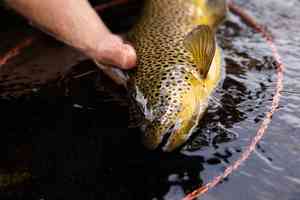


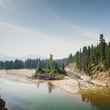
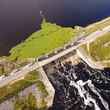

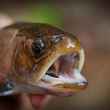
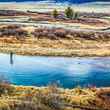



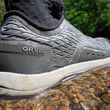
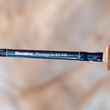



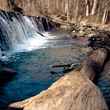
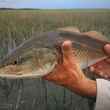
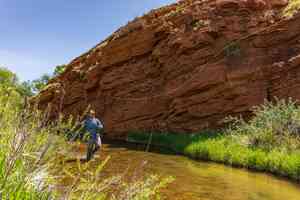
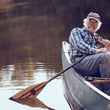

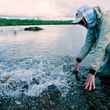
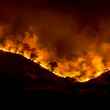
Comments